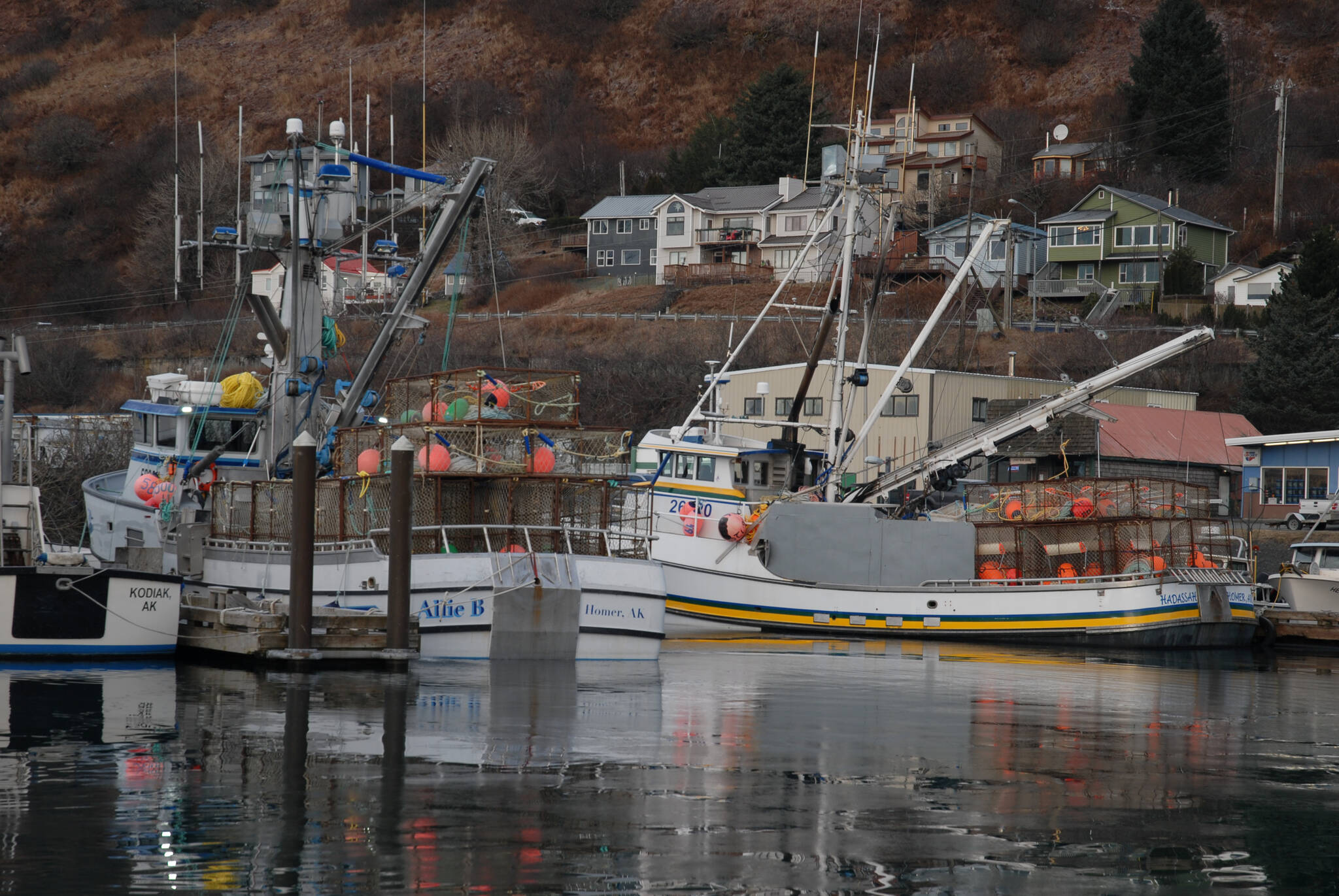Tanner crab fishermen in Kodiak remained on strike as of Wednesday, after two Kodiak Crab Coalition Cooperative meetings last weekend. The cooperative meetings are closed to the general public but the majority of state permit holders in the fishery are members and can attend.
Boats have been packed into the Kodiak harbor since the first week of January.
The price initially offered was $2.50 per pound. Processors raised that to $3.25, but at the Sunday cooperative meeting, fishermen still said no, Homer fisherman Ivan Stonorov said following the meeting. There are 162 permit holders in the Kodiak state crab fishery; 20 have a Homer zip code.
Kevin Abena is skipper of the F/V Big Blue and secretary/treasurer for the Kodiak Crab Alliance Cooperative, which represents more than 120 permit holders.
On Sunday, Jan. 22, Abena told The Kodiak Daily Mirror’s Kevin Bumgarner that “this was probably the best meeting we’ve had as far as everybody being of the same mindset.”
“Nobody is going to fish for $3.25,” he told the Daily Mirror.
After Friday’s meeting, Abena told the Daily Mirror that the Kodiak Crab Alliance Cooperative went to Kodiak processors and made two offers: One was based strictly on an increased price per pound, and the other offer included a profit-sharing model similar to what Peter Pan Seafoods in King Cove is offering to Bering Sea crabbers.
Abena reported the Kodiak Crab Alliance Cooperative heard back from some Kodiak processors, but there was no change in price. As a result, the alliance did not set a date for another meeting.
In an interview by telephone Thursday, Stonorov made a few suggestions for why the market price is so low compared to last year.
Without input from processors, these are somewhat speculative, but Stonorov suggested that one reason might be the volume of Canadian opilio crab on the market.
The Alaska quota is also very high this year and to process at this volume requires an extra step in processing.
“To keep up with processing, they’re going to have to ‘dip’ a lot of crab. If you freeze a crab and you don’t dip it in some kind of acid solution or cook it fully, the meat turns blue, and it’s not any good, at least commercially,” Stonorov said.
One feature of discussion that came up with journalists and industry representatives at the Alaska Marine Science Symposium, held in Anchorage this week, was an assessment of the Kodiak fishery in the context of closure of the 2023 federal Bering Sea crab fisheries.
A point made in a presentation by Scott Goodman, executive director for the Bering Sea Fisheries Research Foundation, and in discussion later, was a positive impact of COVID on the overall crab market (across species). For example, canneries were receiving federal subsidies, providing extra funding than they no longer have.
Another sales option the Kodiak fishery could consider is for the larger boats in the fleet, some of whom may have turned to Kodiak following the Bering Sea closure, to run product from Kodiak to processors in western Alaska such as Dutch Harbor, where fishermen may also get access to the Bering Sea profit-sharing model, Stonorov said.


